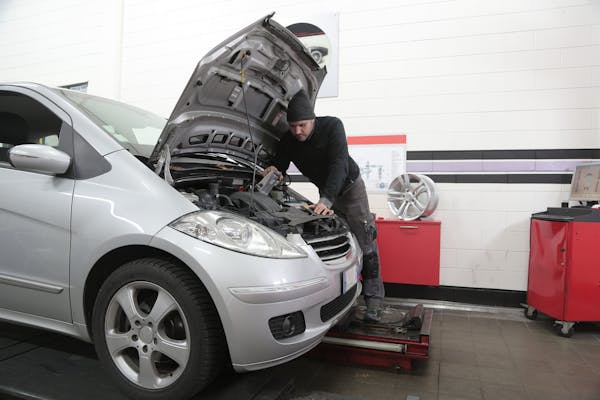The auto repair industry is constantly changing. Whether it’s new technology or evolving repair techniques, it’s important for car owners to understand the changes.
For example, one significant change is the shift from steel to aluminum bodied vehicles. Each requires a different repair technique, which impacts costs and safety.
Mechanics
There are over 276 million vehicles on the roads today and they need to be maintained for safe operation. Mechanics help to ensure that cars are operational and safe by conducting inspections and repairing or replacing damaged components. They also conduct routine maintenance and upkeep on automobiles to keep them running smoothly.
Mechanics need to be able to understand and interpret computerized data, and they must have the ability to use electronic diagnostics to analyze a vehicle’s performance. They may need to repair or replace car engines, transmissions and other mechanical systems. They are also responsible for inspecting and maintaining electrical components.
Mechanics must be able to listen to their customers’ concerns and identify the source of the problem. They must be able to find the right parts and understand how the different car components work together. They should be able to give their customers accurate estimates of time and cost. Mechanics need to be unbiased and explain what needs to be done without inflating costs or suggesting unnecessary repairs.
Parts
Parts play a critical role in auto repair. They can be original factory (OEM), aftermarket, or recycled – or a combination of any of these. The quality of these parts affects the overall repair. Often, the cheaper the part is, the less likely it will last and perform as designed.
During the pandemic, shortages of vehicle parts have increased repair costs and delayed service. Many customers have spent weeks or months waiting for their car repairs while the shop struggled to get the necessary parts for the job.

When you go to a shop, ask for a written estimate that identifies the condition to be repaired and how long it should take to complete. It should also include the cost of any parts and labor charges, if applicable. By implementing a parts markup matrix, auto repair shops can save time on pricing out jobs while ensuring they make a reasonable gross profit. By removing emotion from the process and taking into consideration supplier costs, desired margins, and market dynamics, these matrices provide a clear framework for making parts pricing decisions that align with their business goals.
Insurance
Insurance is one of the biggest costs associated with car repair. It covers damage caused by a crash, whether it’s from another driver or your own actions. It also covers injuries to people in your vehicle or others’ vehicles.
Auto mechanics need commercial property, business interruption and general liability to protect their businesses. They also need specific coverages to cover the risk of faulty repairs, incorrect installations and other issues that could cost them money.
Mechanical breakdown insurance, or MBI, is a type of car insurance that pays for repairs to parts and systems that your standard policy doesn’t cover. However, it typically only applies to cars that are new or have low mileage. For example, GEICO only offers MBI on cars that are less than 15 months old and have 15,000 miles or less on the odometer.
MBI may be worth it if you’re concerned about the cost of frequent repairs, want to avoid high repair bills or need peace of mind while driving your current car. But it shouldn’t be considered a replacement for a manufacturer warranty or an extended warranty.
Reputation
Whether the customer is looking to buy or repair a vehicle, glowing online reviews help establish trust and inspire confidence. These factors can also impact revenue for automotive repair shops. For example, customers will be more receptive to recommended services and repairs with the assurance that they’ll receive quality workmanship and fair prices.
Joe understood that it was critical to engage with his clients and genuinely value their feedback. To do this, he implemented a reputation management tool that allowed him to monitor reviews across all major review platforms and gain insights into areas for improvement.
The tool sent Joe text requests for feedback following every service ticket he completed. The influx of positive reviews significantly boosted his star rating, and it became a self-sustaining cycle that drove growth. The tool also helped him to build his brand and attract new clients. It also helped him compete with his competitors by ensuring his business information was consistent and accurate across all online directories and listings.